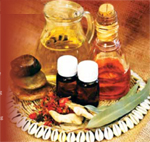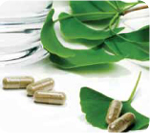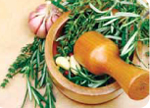|
By :- Neha Mahajan
Herbal medicine is becoming ever more popular in today’s world as people seek out natural remedies.These medicines have been used since the dawn of civilization to maintain
good health and to treat various diseases. To compete with the growing pharmaceutical market, there is an urgency to utilize and scientifically validate more medicinally useful herbal products. Here we are providing an overview of the current trends and opportunities of herbal medicines market.
 Global Market Analysis Global Market Analysis
 The global herbal supplements and remedies market is forecast to reach US$93.15 billion by the year 2015, spurred by increasing incidence of aging population and consumer awareness about general health and well being. Intrinsic benefits including greater efficacy, little or no side effects, economical and increasing inclination towards healthier natural herbs and botanical derivatives promise animated growth in the burgeoning market Market Trends & Issues Herbal medicine plays a major role in the healthcare and functional foods market, both in developed and developing nations. The market for herbal supplements varies by region based on factors such as consumer awareness, product availability, and forms of delivery, product acceptance, and regional regulations.In the US and Europe, herbal medicines represent a major share of pharmaceuticalmarket and are included in regular medical practice. However, the market is highly regulated and extremely difficult to enter, as companies need to pass through rigorous tests before mass production. In countries such as France, Germany, UK and India, herbal supplements along with pharmaceuticals are sold in drug stores. The global herbal supplements and remedies market is forecast to reach US$93.15 billion by the year 2015, spurred by increasing incidence of aging population and consumer awareness about general health and well being. Intrinsic benefits including greater efficacy, little or no side effects, economical and increasing inclination towards healthier natural herbs and botanical derivatives promise animated growth in the burgeoning market Market Trends & Issues Herbal medicine plays a major role in the healthcare and functional foods market, both in developed and developing nations. The market for herbal supplements varies by region based on factors such as consumer awareness, product availability, and forms of delivery, product acceptance, and regional regulations.In the US and Europe, herbal medicines represent a major share of pharmaceuticalmarket and are included in regular medical practice. However, the market is highly regulated and extremely difficult to enter, as companies need to pass through rigorous tests before mass production. In countries such as France, Germany, UK and India, herbal supplements along with pharmaceuticals are sold in drug stores.
Major manufacturers of herbal supplements and remedies are situated in developed countries, and include giant multinational pharmaceutical companies. Some of the smaller companies specializing in herbal products pose strong competition to these multinationals. Herbal supplements made in China have experienced significant demand in the EU and the US. Factors contributing to the growth include foray of premium and reputed companies from chemical and pharmaceutical industries, rise in consumer awareness, increased number of retail outlets along with e-commerce, coupled with efficient support and cooperation of medical and health professionals. A major trend observed in the market is a shift from single ingredient market to multiple ingredient-based medications for a particular condition. There is also an increased demand for herbal and botanical products in multi formula and combo packed format, as well as for chewable capsules and tablets. Women, particularly in the middleaged bracket, form the major consumer group owing to their growing health-consciousness, increased concern for diet, and enhanced attention towards preventive healthcare. The factors that offer growth in the market include widespread acceptance of functional foods, preventive health and alternative medicine regimens, supplier innovations and the Current Good Manufacturing Practices (CGMP) for dietary supplements by FDA. In addition, demographic preferences have also prompted demand for herbal supplements. As the baby boomer generation ages, there is a greater urgency to maintain healthy lifestyles, focusing on alternatives for conventional medicine and general health. Herbal and botanical supplements were natural alternatives for hormone replacement therapy; prostate health; brain health and cognitive function; and joint and connective tissue health. Phytosterols, green teas, antioxidant herbal extracts and natural sweeteners are the few supplements that successfully crossed the threshold of functional foods. Several botanicals such as ginseng, acai, and guarana are already recognized as crossover ingredients. Europe represents the largest regional market accounting for the single largest share of the world market. Asia-Pacific and Japan make up the other important markets for herbal supplements on a global basis. In terms of growth rate,the Asia-Pacific market, led largely by China and India, is set to pave the way with the highest CAGR of 10.7% through 2015. Multi-Herbs dominate as the largest segment, capturing a significant share of the overall herbal supplements and remedies market worldwide. The segment is also forecast to race ahead of the other markets at the fastest compounded growth rate of 9.0% over the analysis period. Soy and Specialty Herbs are also expected to display strong growth potential in the future. Worldwide, alternative medicine is becoming popular and herbal medicine has become one of the most common forms of alternative therapy.
  Global Players Global Players
 Amerifit Brands, Inc. (USA) Amerifit Brands, Inc. (USA) Arizona Natural Products, Inc. (USA) Arizona Natural Products, Inc. (USA) Arkopharma SA (France) Arkopharma SA (France) Bio-Botanica, Inc. (USA) Bio-Botanica, Inc. (USA) Emami Ltd (India) Emami Ltd (India) Himalaya Drug Company (India) Himalaya Drug Company (India) Imperial Ginseng Products Ltd. (Canada) Imperial Ginseng Products Ltd. (Canada) Indfrag Ltd. (India) Indfrag Ltd. (India) Natures Sunshine Products, Inc. (USA) Natures Sunshine Products, Inc. (USA) Sundown Nutrition (USA) Sundown Nutrition (USA) Nutraceutical International Corporation(USA) Nutraceutical International Corporation(USA) Natures Herbs (USA) Natures Herbs (USA) Pharma Nord APS (Denmark) Pharma Nord APS (Denmark) Pharmaton Natural Health Products (USA) Pharmaton Natural Health Products (USA) Potters Herbal Medicines (UK) Potters Herbal Medicines (UK)
 Indian Scenario: Indian Scenario:
 Globally, there has been an unparalleled growth in the plant-derived medicinally useful formulations, drugs and health-care products, its market covering more than 60% products derived from plant origin. India exhibits remarkable outlook in modern medicines that are based on natural products besides traditional system of Indian medicines. Almost, 70% modern medicines in India are derived from natural products. Medicinal plants play a central role not only as traditional medicines but also as trade commodities, meeting the demand of distant markets. Ironically, India has a very small share of this ever-growing global market. To compete with the growing market, there is urgency to expeditiously utilize and scientifically validate more medicinally useful plants while conserving these species, which seems a difficult task ahead.
Globally, there has been an unparalleled growth in the plant-derived medicinally useful formulations, drugs and health-care products, its market covering more than 60% products derived from plant origin. India exhibits remarkable outlook in modern medicines that are based on natural products besides traditional system of Indian medicines. Almost, 70% modern medicines in India are derived from natural products. Medicinal plants play a central role not only as traditional medicines but also as trade commodities, meeting the demand of distant markets. Ironically, India has a very small share of this ever-growing global market. To compete with the growing market, there is urgency to expeditiously utilize and scientifically validate more medicinally useful plants while conserving these species, which seems a difficult task ahead.
 Potential and prospects of plant based modern medicines and health care products : Potential and prospects of plant based modern medicines and health care products :
Can India target the international market?
India has one of the richest plant medical traditions in the world. It is a tradition that is of remarkable contemporary relevance for ensuring health security to the teeming millions. Traditional medicine has served as a source of alternative medicine, new pharmaceuticals, and healthcare products. Medicinal plants are important for pharmacological research and drug development, not only when plant constituents are used directly as therapeutic agents, but also as starting materials for the synthesis of drugs or as models for pharmacologically active compounds A significant number of modern pharmaceutical drugs are thus based on or derived from medicinal plants. The derivatives of medicinal plants are non-narcotic with little or no side effects. It is estimated that nearly three fourths of the plant-derived prescription drugs used worldwide were discovered following leads from local medicine. About 25% of modern medicines are descended from plants first used traditionally according to WHO. Many others are synthetic analogues built on prototype compounds isolated from plants. Almost, 70% modern medicines in India are derived from natural products The basic uses of plants in medicine will continue in the future, as a source of therapeutic agents, and as raw material base for the extraction of semi-synthetic chemical compounds such as cosmetics, perfumes and food industries. Popularity of healthcare plant-derived products has been traced to their increasing acceptance and use in the cosmetic industry as well as to increasing public costs in the daily maintenance of personal health and well being. In the dual role as a source of healthcare and income, medicinal plants make an important contribution to the larger development process. Though the efficacy of herbals requires development of quality consciousness in respect to the evaluation related evidences, supplying the demand for botanicals and herbals is a booming business. Recently even developed countries, are using medicinal systems that involve the use of herbal drugs and remedies. Undoubtedly the demand for plant-derived products has increased worldwide. The demand is estimated to grow in the years to come fuelled by the growth of sales of herbal supplements and remedies according to several surveys. This means that scientists, doctors and pharmaceutical companies will be looking at countries like China, India, etc. for their requirements, as they have the most number of medicinal plant species and are the top exporters of medicinal plants.
The market share of herbal products made in developing countries remains comparatively low due to lack of research and development and the huge investments in making standardized products. Extraction of active principles and manufacture of drug formulations is sophisticated technology and capital intensive. A systematic and a concerted approach to this activity have not been maintained for want of sophisticated equipment and high-cost chemicals. Even in India, there has been a lack of Research and Development on product and process development although recent research has helped propel the knowledge of other plants from around the world and this has helped accelerate the development of new supplements and medicines. In terms of the volume of medicinal plants exported, India ranks second in the world. There is thus an enormous scope for India to emerge as a major player in the global herb based medicines and products by developing its Research and Development capability.
The various challenges for the Indian herbal industry to meet global requirements are:
From a global perspective, critical challenges for herbal industry are:
 Regulatory concerns Regulatory concerns  Consumer perceptions Consumer perceptions Competition Competition
1. Regulatory concerns
The regulatory concerns include:
• Quality
• Efficacy
• Safety
• Standardization
* Quality –
A Major Concern Quality of herbs has become a major concern following reports of heavy metals in Indian herbs. Adulteration of plants is a serious problem. Some of the common adulterants are: botanicals, toxic metals, microorganisms, microbial toxins, pesticides, and fumigation agents. Such contamination can lead to serious harm to patients taking such remedies and could also interfere with the assessment of safety in a clinical trial. Quality has to be assured at all stages – herbal raw materials, processing of herbals and finished herbal medicines.
* Substantiation of Clinical Efficacy
One of the major issues is lack of good quality clinical trials. Even if the animal studies or anecdotal clinical experiences are promising and use of an herb is widespread, such observations cannot predict the results of well-designed randomized, controlled trials.
* Safety Issues - Adverse Reactions and Drug
Interactions
Herbal medicines are generally considered
comparably safer than synthetic drugs. However,
recent reports challenge such assumptions. For
example, Ephedra marketed as a dietary aid in
USA, led to at least a dozen deaths, heart attacks
and strokes. Besides, drug interactions of herbal
drugs are of a serious concern. Garlic is reported
to increase clotting time in patients taking
warfarin. WHO has urged the governments to
establish regulatory mechanisms to control the
safety and quality of products.
Standardization of herbal drugs
For safe and effective use of herbal drugs, consistency in composition and biologic activity are essential.
However, herbal drugs frequently fail to
meet this standard, because there are problems
of
1) difficulties in identification of plants,
2)genetic variability,
3) variations in growing conditions,
4) diversity in harvesting procedures and processing of extracts,
5) the lack of information
about active pharmacologic principles.
2. Consumer Perceptions
The consumers now want more authentic information on quality, safety and efficacy of herbal products. The medical perceptions about complementary medicine are diverse. Surveys show that, overall, physicians believe it is moderately effective, while many doctors regard complementary therapies as scientifically unproved. The doctors’ are concerned about
1) use of such therapies as an adjunct or an alternative to conventional care,
2) comparative efficacy of complimentary and allopathic therapies and
3) the possibility of adverse effects.
However, they want published information from reliable sources on quality, safety and efficacy of herbal products
3. Competition
Amongst the countries with herbal resources, China is a major competition. The indications for clinical trials of Traditional Chinese Medicine (TCM) cover the current medical challenges of Allopathy. Some of the therapeutic areas of TCM clinical trials are: neurology, oncology, cardiology, diabetic complications, rheumatoid arthritis etc. These clinical trials are conducted according to scientific and ethical principles of modern clinical research. The government efforts are intended to boost the quality of Chinese medicine and enhance China’s ability to compete in world markets.
Concluding Remarks
A major factor impeding the development of the medicinal plant based industries in developing countries has been the lack of information on the social and economic benefits that could be derived from the industrial utilization of medicinal plants. Except for the use of these plants for local health care needs, not much information has been available on their market potential and trading possibilities.
The global regulatory agencies – US FDA, European Community – have made guidelines for botanicals. Recently, the Australian government has backed increased regulation of the complementary health sector. These guidelines focus on documentation of the key issues - Quality, Efficacy, Safety, and Standardization. Some of these issues will also be applicable to dietary supplements. The international regulatory authorities would expect the data generated (pre-clinical, CMC and clinical) should meet the standards of GxPs (Good Practices) – good agricultural practices, Good Laboratory Practices (GLP), Good Clinical Practices (GCP) and Good Manufacturing Practices (GMP). These guidelines will make licensing difficult for HMPs. Besides, the governments are likely to restrict availability of herbal products with toxic potential.
The consumers – doctors and patients- expect innovation and effective options for chronic diseases.The industry has to
1) become creative in designing clinical trials,
2) developing consumer friendly products and
3) effective marketing communication.
India has the knowledge and skill to develop its Research and Development capabilities. It is the second largest exporter of medicinal plants. Instead of exporting such a large amount of valuable resource with very low returns it can think about developing its own Research and Development capabilities and produce finished goods in the form of modern medicines and health care products derived from plant origin and based on the knowledge of alternative system of medicine. Standardisation of products is most essential to compete in the world market that India has to lay stress on. The finger printing and marker compound analyses are nowadays gaining momentum for standardisation of traditional medicinal formulations. This technique not only helps in establishing the correct botanical identity but also helps in regulating the sanctity of the herb.
The future belongs to an herbal company that is research-focused, quality-driven, regulatory-compliant, consumerfriendly and market-savvy!
|







